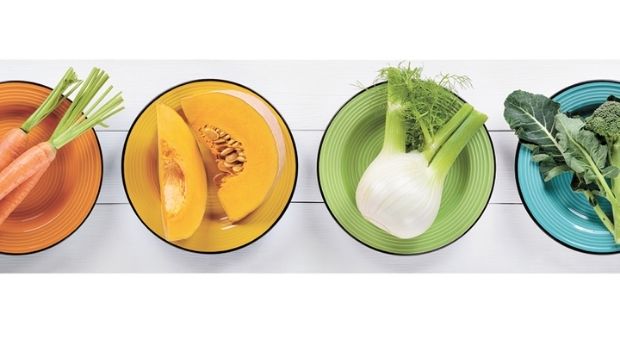Veggie Tricks
How to Get Kids to Eat Better
It’s the rare parent that doesn’t have to plead and plot to get a child to eat vegetables. That’s not surprising; almost no one is born with a natural hankering for broccoli, and being wary of strange new foods may be hardwired in us so we can survive as a species. Happily, clever workarounds can help move a child past exclaiming, “Yuck!” as these parenting bloggers, nutritionists and other grown-ups have learned in the veggies-are-good-for-you trenches.
Serve smoothies. “The combinations are endless. Pack it full of spinach, kale, frozen zucchini or cauliflower. Then add a frozen banana or other fruit, plus your milk of choice (like cashew milk) then blend. Bam! You have a naturally sweetened, veggie-filled, delicious drink for your child, and they don’t even know they’re drinking their vegetables,” writes Emily Lesh, at Experienced Mommy.
Use sprinkles. “Everyone loves sprinkles! You can use chia seeds, microplaned broccoli head, flaxseed, grated carrots or even frozen yogurt dots. It transforms the food into something much more exciting,” writes Danielle Zold, at Picky Eating Dietitian.
Get them cooking. “My kids love to help in the kitchen, and I have found that they are much more likely to try foods that they have helped to cook. We made our cranberries from scratch for Thanksgiving. My kids loved watching the cranberries boil and pop in the pot and seeing them change colors as they cooked. When dinnertime came, they were excited to try the cranberries, and my daughter ended up loving them!” writes Sarah Miller, at Home Schooling 4 Him.
Rotate family choices. “Everyone in the family gets to choose one meal on one night of the week. We all commit to eating whatever the family member has chosen. This has helped our kids to try meals that aren’t on their favorite list, as they know that they’ll get their turn to choose soon,” writes Sophia Nomicos, at Mas & Pas.
Tempt them. “When I’m making dinner, I like to have carrots or cucumbers available on the counter. They always come in to try to get snacks and if they see those, they will ‘sneak them away’ to eat them, since I tell them no more snacks or food til dinner,” writes Heather Hoke, at
Reward multiple attempts. “Just because a kid hates a veggie the first 10 times you offer it doesn’t mean they’ll hate it forever. I try to make it fun by having kids track veggies they’ve tried and the number of times they’ve tried them with stickers on a veggie discovery table, which means even foods they dislike feel rewarding to try,” writes Jess Dang, at Cook Smarts.
Be sneaky. “Take something kids already like and make it with healthier ingredients. For example, if your kid loves meatballs, start by making them homemade, then adding in healthy things like frozen chopped spinach. I’ll grate zucchini and carrots and put them in about any pasta, meatloaf, burgers. I used to think sneaking in veggies was a bad thing, but honestly, it’s been great for our family,” writes Stephanie Rapone, at Pantry to Plate.
Talk up the benefits. “I have found that when my son doesn’t want to eat something, he is much more likely to eat it if I tell him its benefits. For example, I told him, ‘When you eat carrots, they make your eyes stronger, and they help you see in the dark.’ He loves to eat carrots now. He says, ‘Now I will be able to see in the dark!’ I am learning a lot this way, too. We Google the benefits of food at least once a day,” writes Elizabeth Manly, at Discovery Play with Littles.
Reinforce. “Explain that when a child feels good, she can attribute it to eating healthy. For example, if we managed to get our daughter to eat an apple—her favorite fruit that she now eats every day—I would say, ‘Wow, you sure ran around a lot at the playground. That apple you ate gave you a lot of energy,’” writes Kirsten Schuder, author of Schooling Your Kids Through a Pandemic.
Ronica O’Hara, a natural health writer, can be contacted at OHaraRonica@gmail.com.
What the Research Shows
Be persistent. Don’t give up too soon. Researchers have found that it can take toddlers five to 10 times in tasting a new food before enjoying it; and for 3-to-4-year-olds, up to 15 trials.
Putting on an apron helps. A study of Canadian fifth-graders in 151 schools found that those that helped with meal prep and cooking were more likely to eat vegetables and fruit.
Giving kids a choice works. Australian kids that were offered a choice of broccoli, cauliflower or green beans for five weeks ate twice as many veggies as children offered only one vegetable.
Thinking a food is rare makes it special. In a recent study, 5-year-olds that were told there weren’t many more carrots than were on a plate ate 50 percent more carrots; 96 percent of those kids rated the carrots as yummy, compared to 67 percent in a no-limit carrot control group.
























